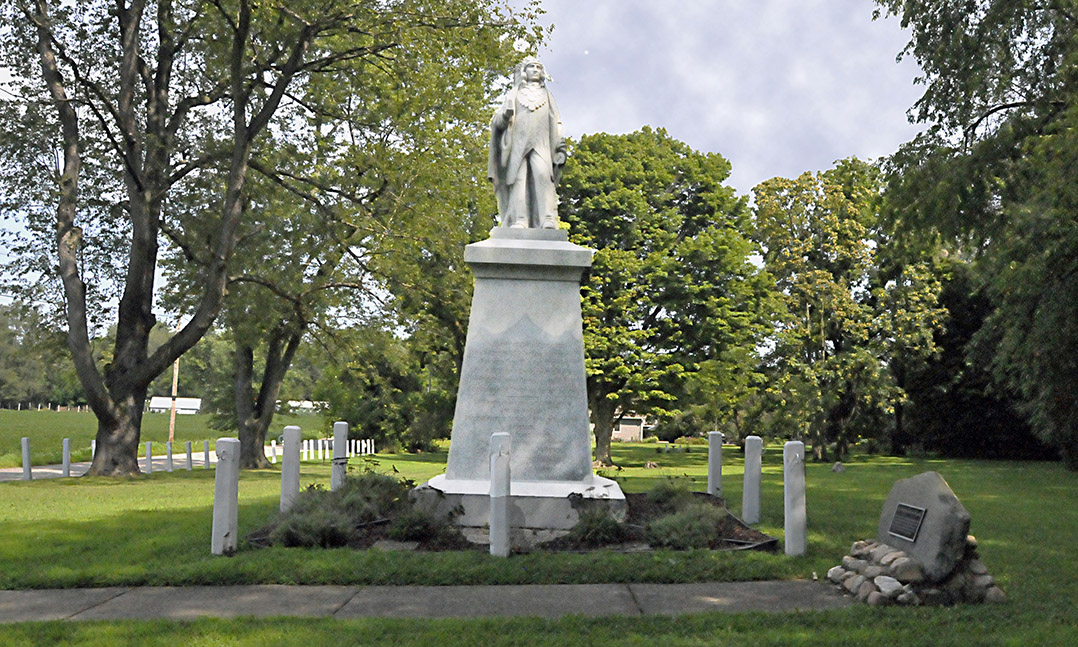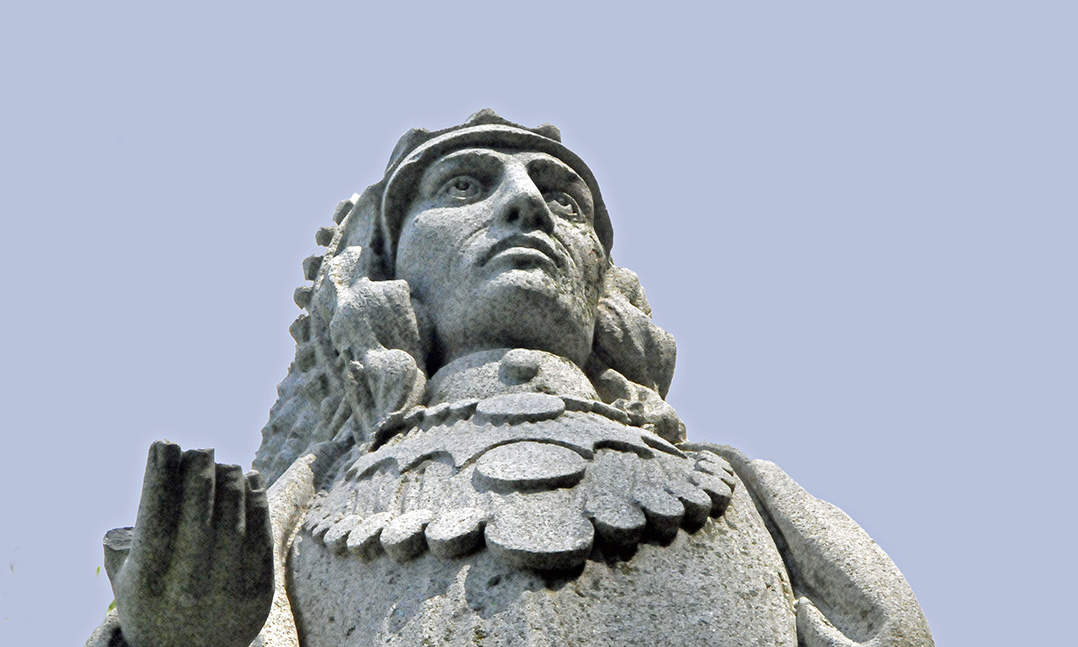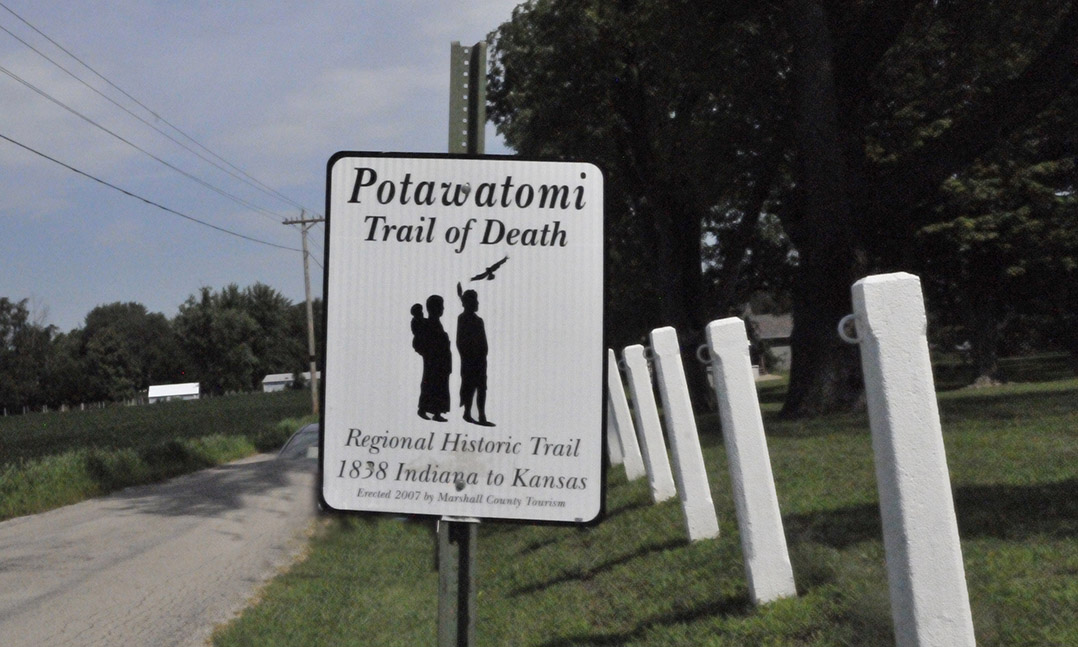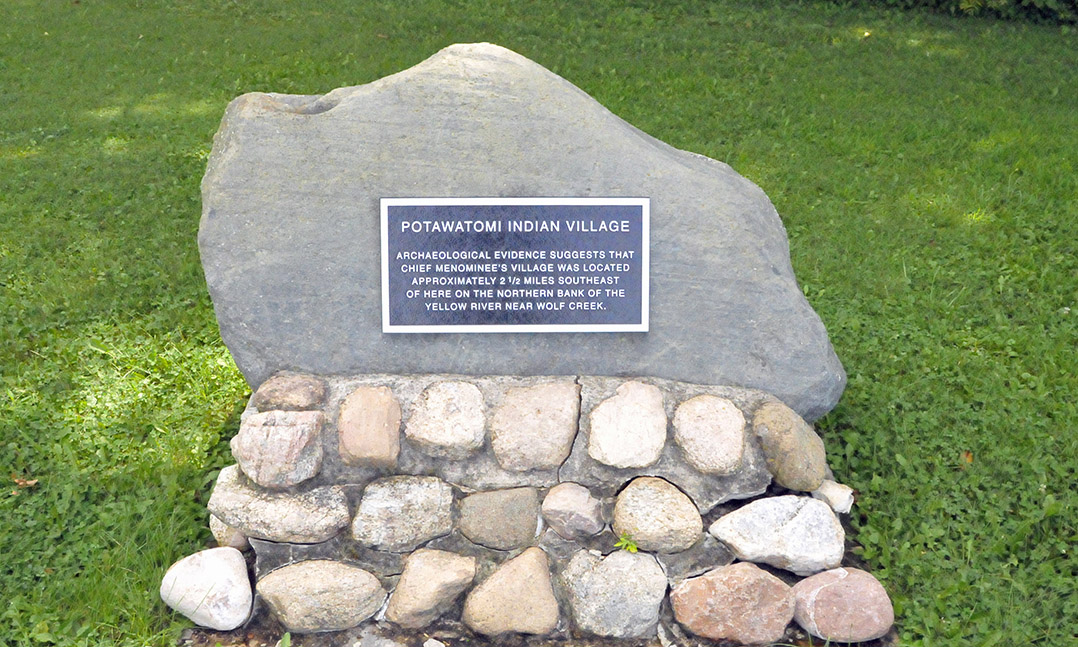The first monument honoring Native Americans erected by any government is on Peach Road about 5 miles southwest of Plymouth.
By 1837, most Potawatomi, Native Americans living in the Upper Midwest, had consented to removal from Indiana under a series of so-called “Whiskey Treaties.” Chief Menominee, an influential Potawatomi religious leader, claimed that the treaties were fraudulent and gathered about 100 like-minded families near Twin Lakes. Under pressure from area residents, Gov. David Wallace enlisted Gen. John Tipton, a survivor of the 1811 Battle of Tippecanoe (more next week), to drive Menominee and his supporters from Indiana. On Aug. 30, 1838, Tipton and 100 armed volunteers entered Menominee’s village and began rounding up inhabitants. On Sept. 4, Menominee and 848 followers left at gunpoint as the militia torched their homes. The Potawatomi, their numbers already shrunken by death, spent the afternoon of Sept. 12 at the Tippecanoe Battlefield, which Tipton had purchased and donated to Indiana two years earlier. Before the Potawatomi reached Kansas on Nov. 4, 42 had died, 28 of them children, and the 660-mile route became known as the “Trail of Death.”
In 1899, Daniel McDonald, owner of Plymouth’s newspaper, published a book recounting the forced removal of Menominee and his followers. After McDonald was elected to the Indiana General Assembly, he convinced his colleagues to appropriate $2,500 to erect a monument near Menominee’s village remembering him and the Trail of Death. The 17-foot-tall granite monument, featuring a standing Menominee, was dedicated on Sept. 4, 1909. McDonald related the historical context and (according to the program) the Plymouth band played, “The Dirge of a Vanished Race,” “softly and slowly,” while the granddaughter of Simon Pokagon, the Potawatomi author for whom Pokagon State Park was named, unveiled the monument. Subsequent rumors of pennies in Menominee’s right hand may explain its missing thumb.








